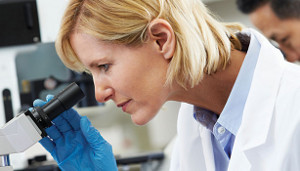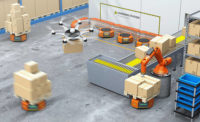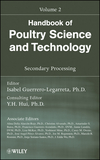 Automation …
Automation …
I can almost hear you saying, “Ok, ok, enough already. Don’t tell me this is another article promising that someday we will have plants that are void of human workers, animals calmly committing seppuku, yields always maximized, and the environmental envelope always cleaned with continuous sampling and testing.”
I can assure you, though: Even though I am a zealot when it comes to automation in our industry, there will be no attempt to sell you the impractical vision of a “lights off” plant. But in the reality of food safety and production, one can look toward automation to couple the efforts of both in order to meet the consumers’ needs.
Automate food safety? Yes, but not in the sense of robots doing pre-op or taking samples, but functionally combining:
- Design
- Sanitation
- Production processes
Combining these three areas, and utilizing automation and technology can make your plant more solid in food safety while improving your productivity.
Design
Many engineers will develop a plant or production line with a focus on functionality. Some of my engineering brethren gravitate to their specialty and often times can operate with blinders. By the time some projects are completed, the finished results do not look or function as the original concept.
The end product is then handed over to operations to run, sanitation to clean, and quality assurance to monitor. And since the results have morphed, more challenges are presented to insure proper cleaning and food safety.
Whether we are on a beef-slaughter floor evaluating clean air make-up, or the separation of drains in a ready-to-eat plant, design is a critical step in a food-safety and quality program. Optimal layout designs are relatively easy when one starts with a blank sheet of paper. Unfortunately, most of us face the challenge of developing a great design within older facilities that have low ceilings, antiquated drains, floor patches, inaccessible areas, older equipment, niches on conveyors, etc.
All that said, the process to design an automated facility and food-safety program at the same time is rather simple:
nCreate an easily cleanable and accessible work envelope
nMinimize the handling of product
nStreamline equipment
nFollow AMI Sanitary Design Principles for Facilities
nFollow AMI Sanitary Design Principles for Equipment
Sanitation
“You are only as clean as you start.”
That statement was made to me 25 years ago as I stepped on to the kill floor at my first pork plant. Since that time, I have viewed sanitation and the process we all consider “cleanup” as the beginning, not the end of the production day. With that in mind, there is the process of cleaning the work envelope not only to the visibility of the eye but to the microbiological level.
Recently I took an orthopedic surgeon on a tour through our plant, and he was amazed at the amount of cleaning that occurred. I told him, in no uncertain terms, that when sanitation has been completed, I would not hesitate to eat off the floor. In utter amazement he questioned: “Really?” And my response was, “Yes, we treat our facilities as you would treat your operating room.”
In that frame, not only did the surgeon realize the highly specialized means by which we clean our facilities, but also the need to start every processing day consistently clean and properly sanitized.
Therefore, to make the sanitation process standardized, one should always be exploring ways in which to automate the cleanup process. Throwing more water, chemicals and people at the plant is not an automated or sustainable solution.
Processes
With the plant clean, pre-op completed, rooms released and results from samples good, we introduce production workers and a high volume of raw material to process. The lines start up, machines hum to life and products are transported through the process.
It is in this phase where automation can be integrated with food safety.
We send QA technicians into the plant geared up with their flashlights, sampling swabs, clipboards and HOLD tags to check and monitor systems. Whether the techs are checking part of a HACCP plan or monitoring a SSOP, information is recorded on paper and issues addressed accordingly.
Why isn’t this process done electronically?
I see the next step in technology evolution is for QA techs to have tablets (iPads, Galaxies, etc.) to monitor systems and processes in real time. Not only will this reduce paperwork but provide valuable data for faster corrective actions.
Imagine this scenario. Every machine, conveyor, tool has an asset-tracking identifier. This could be a bar code or RFID chip that is secured to the equipment, containing detailed information as to when it was placed in service, cost, etc. Identifiers will also be located in the various designated areas of the plant.
In this scenario, when our QA techs conduct their pre-op or other checks, they will scan the identifier and record the findings. The history that is recorded will allow better long-term decisions as well as provide data that can be used for statistical process control.
Summary
Technology exists that, when coupled with processes, can provide a stronger food-safety program in any plant. Our industry has transitioned from shadow lights and workers aligning carcasses to vision systems articulating cutting tools.
Automation has been, for the most part, coupled with the physical processing of the proteins. I see the next step in automation is the application to data collection and real time information to improve the overall safety and quality of our processes.
We are always going to be processing proteins, cleaning facilities and monitoring our system. By embracing technology and automating our food-safety systems, they can be enhanced and continue to improve.









